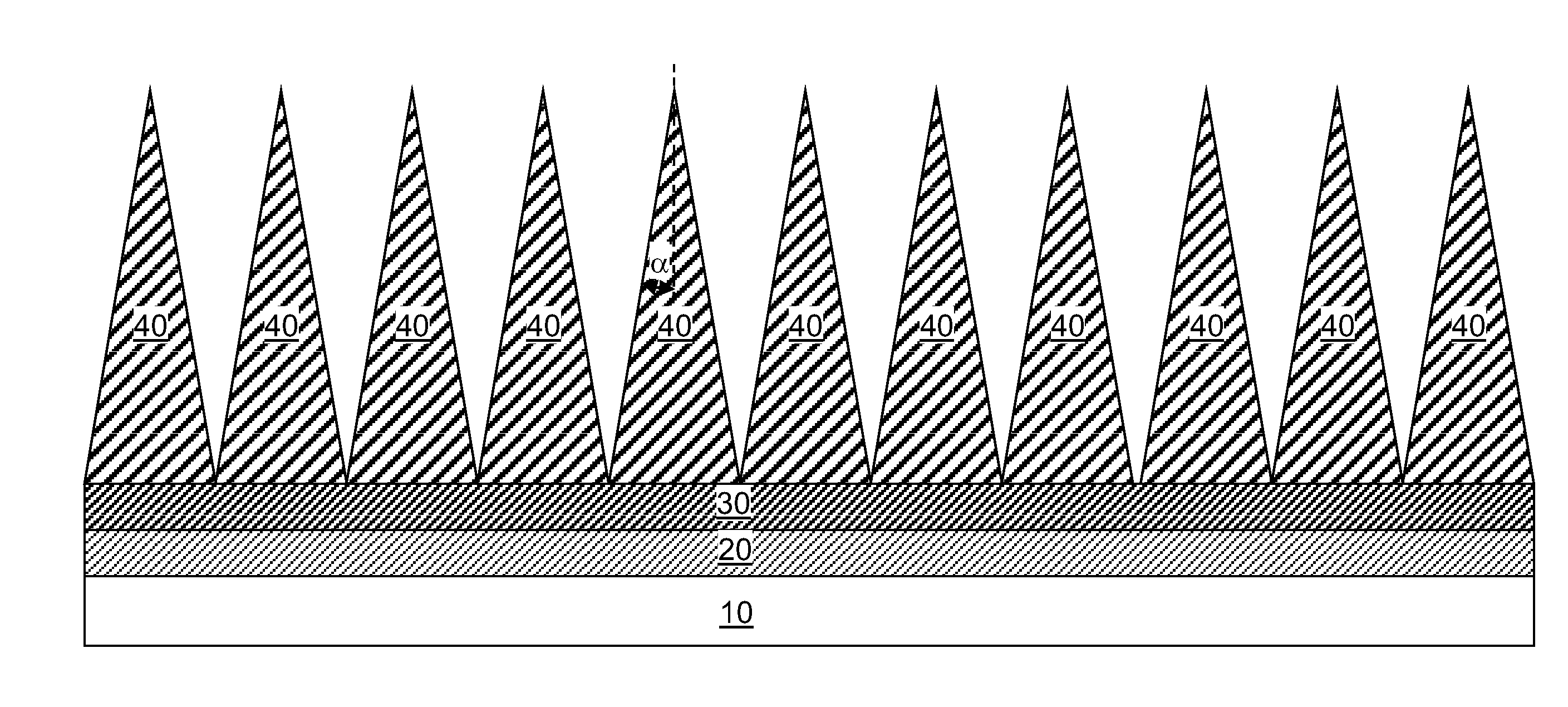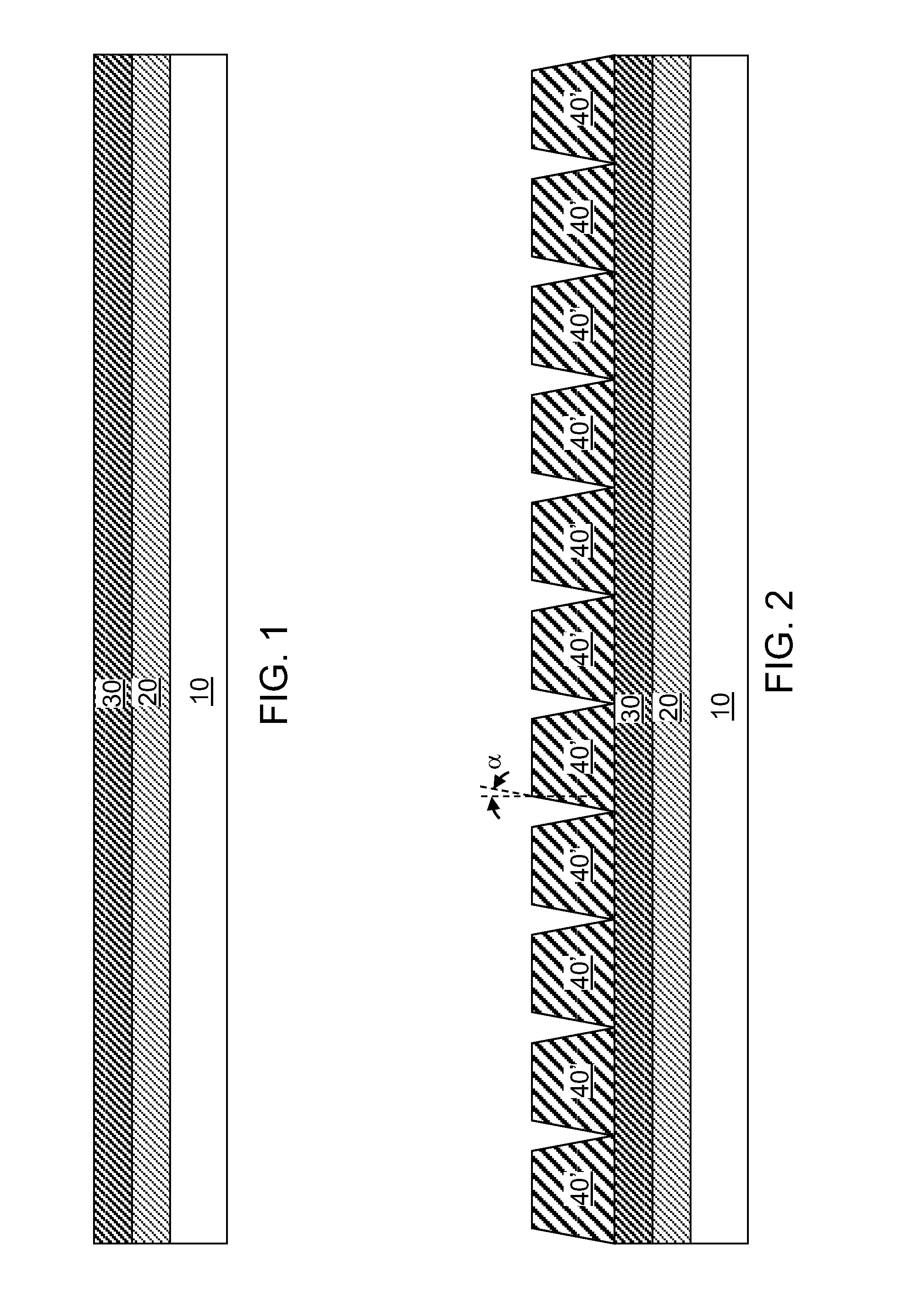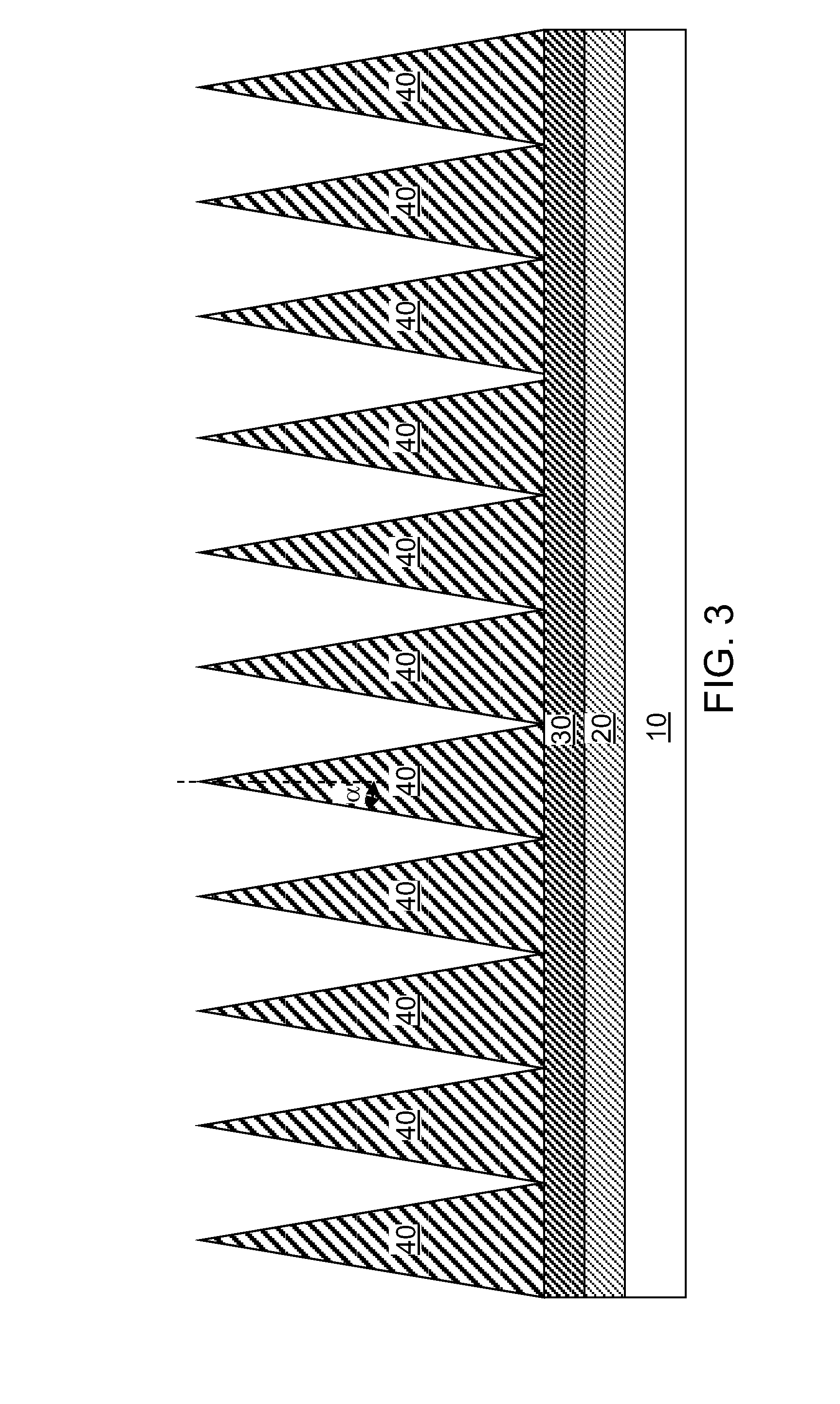Nanocone-based photovoltaic solar cells
a photovoltaic solar cell and nano-based technology, applied in the field of photovoltaic devices, can solve the problems of limited photoelectric conversion efficiency of these planar solar cells, the inability to control the thickness of these planar material layers, and the inability to collect charge carriers generated by the photons, etc., and achieve the effect of efficient charge collection
- Summary
- Abstract
- Description
- Claims
- Application Information
AI Technical Summary
Benefits of technology
Problems solved by technology
Method used
Image
Examples
Embodiment Construction
[0023]As stated above, the present invention relates to a photovoltaic device including a nanocone structure, and methods of manufacturing the same, which are now described in detail with accompanying figures. It is noted that like and corresponding elements mentioned herein and illustrated in the drawings are referred to by like reference numerals. It is also noted that proportions of various elements in the accompanying figures are not drawn to scale to enable clear illustration of elements having smaller dimensions relative to other elements having larger dimensions.
[0024]As used herein, a “transparent conductive oxide (TCO) substrate” refers to any electrically conductive substrate that is transmissive, allowing solar radiation to pass through, while providing an electrode contact for a device thereupon.
[0025]As used herein, a “depleted region,” or a “depleted junction region” refers to a semiconductor region in which static electric field is present in the absence of illuminati...
PUM
 Login to View More
Login to View More Abstract
Description
Claims
Application Information
 Login to View More
Login to View More - R&D
- Intellectual Property
- Life Sciences
- Materials
- Tech Scout
- Unparalleled Data Quality
- Higher Quality Content
- 60% Fewer Hallucinations
Browse by: Latest US Patents, China's latest patents, Technical Efficacy Thesaurus, Application Domain, Technology Topic, Popular Technical Reports.
© 2025 PatSnap. All rights reserved.Legal|Privacy policy|Modern Slavery Act Transparency Statement|Sitemap|About US| Contact US: help@patsnap.com



